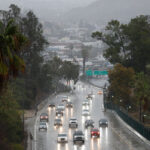A hurricane forecaster this week predicted a turbulent season this year, including a good chance one will hit the coast, but forgive South Carolina’s Huiet Paul if he was unimpressed.
“Only the good Lord knows and he’s not telling anybody,” said Paul, 88, who lives with his wife in a Sullivans Island home built to withstand 500 mph winds. “You have to accept what comes your way when it comes.”
Forecaster William Gray predicted a very active season with 17 named storms, including nine hurricanes.
Paul doesn’t put much stock in predictions, from Gray or anyone else. “He’s probably a very nice person, but I don’t think he hits it right on the head,” said Paul, who rebuilt after his traditional beach house was destroyed by Hurricane Hugo almost 20 years ago.
Last year’s prediction was similar, but the season was mild because El Nino developed with its strong winds that tear hurricanes apart.
The busiest Atlantic season on record was the 28 storms that formed in 2005. The busiest in South Carolina was a year earlier when seven storms affected the state and two hurricanes hit the coast.
State emergency management officials said they would be making the same preparations no matter what the forecasts say.
“We really don’t know which year is going to be the South Carolina year,” said Joe Farmer, spokesman for the state’s Emergency Management Division. “It only takes one storm.”
Hugo, a Category 4 storm that hit Charleston in 1989 causing $6 billion in damage, struck during a relatively mild season, he said.
He said the department is working to install connections so generators easily can be hooked up to the electrical systems of schools in the Lowcountry that are used as evacuation shelters.
The agency also plans to acquire a large warehouse near the coast where it can store supplies to be used for storm relief. In the past, material was brought from Columbia.
Last week, Gov. Mark Sanford said state residents should prepare for the season and urged every family to have its own disaster plan.
“If you don’t have a citizenry that is taking steps itself to be prepared, then you’re going to have a problem,” Sanford said.
Paul’s house, built by his son in 1991, is 3,800 square feet. Made of a concrete shell with urethane insulation and a rubberized outer coating, he calls it “Eye of the Storm.”
The home has motorized hurricane shutters and can withstand the strongest storm surge.
But if a major storm approaches, Paul said he may evacuate. It’s not that he worries about his safety, but he doesn’t relish going days without electricity in a storm’s aftermath.
The Pauls have stayed during smaller storms since Hugo.
“I’m 88 years old so I’m not sure how much longer that will last,” he said. “I don’t think it’s because of a hurricane we’re going to get out.”
Was this article valuable?
Here are more articles you may enjoy.

 Trump Sues BBC for $10 Billion Over Documentary Edit
Trump Sues BBC for $10 Billion Over Documentary Edit  Atmospheric River to Flood Pacific Northwest Through Week
Atmospheric River to Flood Pacific Northwest Through Week  Marijuana’s Move to Schedule III: What it Really Means for Cannabis Insurance
Marijuana’s Move to Schedule III: What it Really Means for Cannabis Insurance  Insurance AI Demo Day Calendar Announced
Insurance AI Demo Day Calendar Announced 